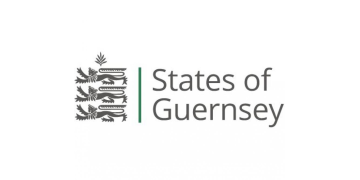The Education and Skills Funding Agency has moved a step closer to limiting apprenticeship providers’ delivery to the sectors they have experience in.
Under new conditions published last week for the refreshed register of apprenticeship training providers, providers must prove their “experience of managing and delivering training to learners and are established within the sectors in which you intend to deliver”.
And if in the future the provider wants to move into sectors they did not mention in their initial application, they must for the first time inform the agency “within one calendar month”, a spokesperson told FE Week.
Failure to do so will now determine the provider as “high risk” under the intervention regime.
However, the process for informing the ESFA of any delivery changes is still being worked on.
The agency’s director for apprenticeships Peter Mucklow told FE Week’s Annual Apprenticeship Conference this week that those details will be set out in “due course”.
He said it is “clearly a warning sign” if a provider changes the sectors they deliver in at “very short notice” and “as regulator, we ought to know about that and be at least able to raise questions”.
But he insisted it is not the ESFA’s intention to “prevent good providers from moving into new areas”.
Plans to limit providers by apprenticeship standards and sectors were first revealed by Mucklow’s predecessor Keith Smith at last year’s AAC.
FE Week understands that since then, the proposal, as well as another to introduce earning limits on providers, has been drawn up but the agency is holding out for extra funding from the Treasury to increase its oversight capacity, which is not yet forthcoming.
Association of Employment and Learning Providers chief executive Jane Hickie said it “seems reasonable” for providers to prove their sector-subject expertise, but her organisation is “watching carefully the ESFA’s approach, which may further evolve moving forward”.
“Informing the ESFA is very different to seeking approval, but we are clearly moving towards a more regulated marketplace for apprenticeship training through another RoATP refresh and the ESFA making moves to gather more granular information on sectors and standards,” she added.
“Apprenticeships are driven by employer-led demand, so a balance of risk and oversight needs to be struck.”
The move to potentially limiting providers by sectors would align the provider register to the one for end-point assessment organisations, which can only assess apprenticeship standards they are experts in and approved for via application.
Tom Bewick, chief executive of the Federation of Awarding Bodies, said that if the ESFA had “managed the provider register, setting the bar high enough in the first place”, the agency “would not now find itself in this remedial position”.
“Too often over the last few years we’ve seen officials encourage new market entrants to the detriment of system-wide quality.”
But, he added, one “problem with the ESFA now micro-managing the provider base is that, over time, it may end up stifling innovation and discouraging business investment”.
This will be the third version of the register of apprenticeship training providers since its launch in March 2017. The most recent “refresh” was in January 2019.
Controversially, all existing providers on the register will need to reapply yet again.
Mucklow said that process will get under way “imminently”.








As with any policy change the detail will determine how we manage this but fundamentally, well, shouldn’t we be operating like this already?
There will always be occasions when an employer will ask a provider to develop an offering in a new area because they have an existing successful relationship & if developed properly, delivery in that new area isn’t a problem. However if we’re out there saying yes to everything simply to turn a coin then don’t be surprised when the wing clipping follows.
Regulatory oversight is always determined by the level of successful delivery within the sector.